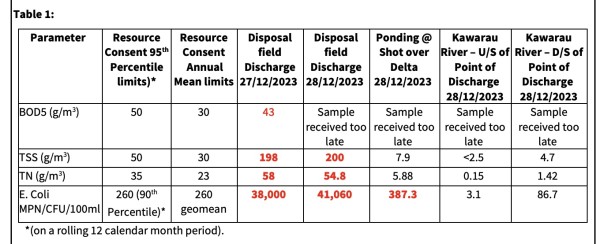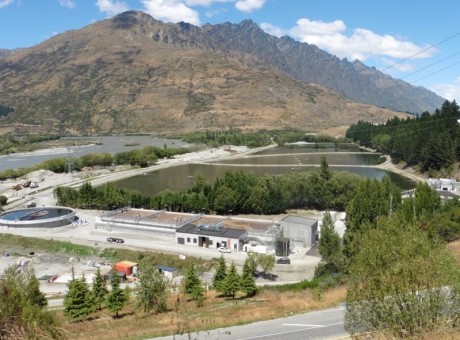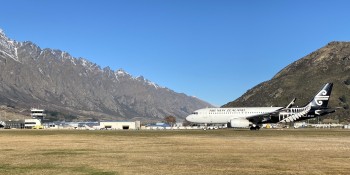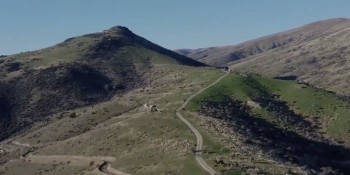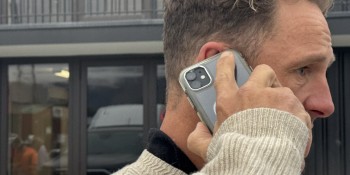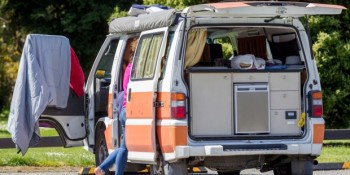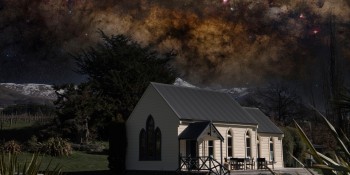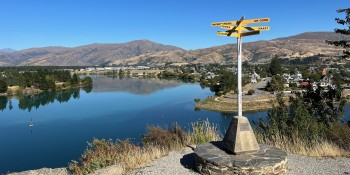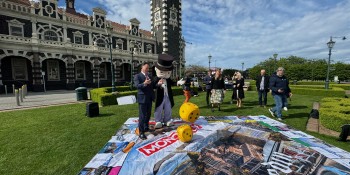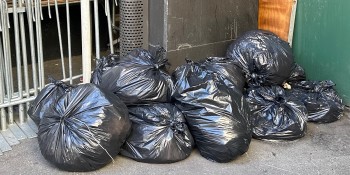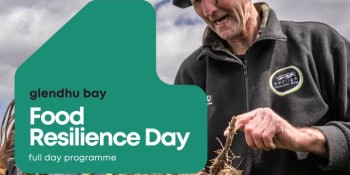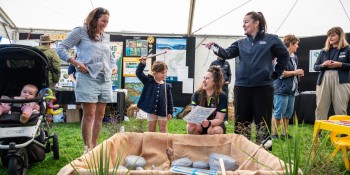Sewage: the real data and the real emergency - it's the wall, not birds
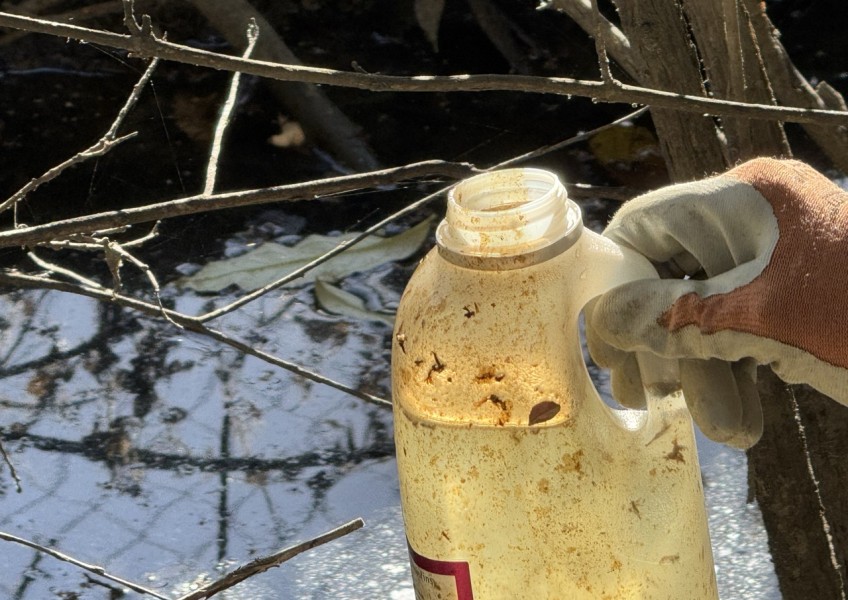
Crux has for many months been curious about the use of questionable data by both QLDC and the regulator the ORC. We carried out our own tests on March 5, 2025, to test the theory that negative or dangerous results are being suppressed, manipulated or even ignored by both the local council and the regulator.
We also believe that the “urgency” around QLDC’s emergency powers ploy is that the wall built illegally by QLDC via Veolia and contractors is about to collapse. It’s already started.
Here’s chapter and verse on how we successfully set out to prove these points
Background.
It’s well known in professional PR and Journalism fields that a genuine news story can be derailed by a “deep dive into the weeds” – in other words a tsunami of “scientific” details that can be interpreted in lots of different ways.
It can be an endless debate that ultimately benefits the party driving a particular agenda – and can leave journalists trapped in a mess of conflicting interpretation. But try playing this game without the necessary expertise and it can come back to bite you.
So – we set a scientific trap. One that can’t easily be manipulated. Here’s how it played out.
Sunday, March 2, 2025.
Crux discovers a new breach in the illegal earth wall built around the disposal field. It was along the public Twin Rivers bike trail and around 100 – 200 metres long.
We reported this to the ORC’s Pollution Line (as a private resident and ORC ratepayer) on Monday, March 3. We got a prompt response, and things seemed to be happening. We even got a case number - PF-250303-092621.
Then ORC realised that the report came from a journalist and the communication stopped. We were passed on to the PR/Marketing team. Things went dead. Things went very quiet.
Wednesday, March 5, 2025.
As a client of Eurofins, the world’s leading independent water testing lab, Crux took our own samples at 9.30 am on Wednesday March 5, having picked up sample bottles, sample paperwork and a chilly bin on the afternoon of Tuesday March 4.
The samples were then couriered by Eurofins to the sample lab in Invercargill. Speed is essential as some tests like e coli need to be carried out within 24 hours of collection.
The results start to come up on a client dashboard within days and then we got our final analysis of the disposal field effluent.
You can read the full results here.
The bottom line is that a number of readings broke either QLDC consent limits or public safety limits.
E coli was at 1,600 colony forming units (cfu’s) per 100 millilitres. The QLDC’s consent limit is 260 cfu’s – Auckland beaches get cleared at 550 cfu’s.
Crux has access to a number of wastewater experts who share our concerns over the Queenstown sewage crisis.
In summary they said:
“COD is high, anything over 70 mg/l is considered heavily polluted. Treatment should achieve under 70. Ecoli is up too.”
The COD reading in our sample was 170 mg/l.
In wastewater, Chemical Oxygen Demand (COD) measures the amount of oxygen required to chemically oxidise all organic and some inorganic matter, serving as a key indicator of water quality and the potential environmental impact of wastewater discharge
This was the QLDC’s and ORC’s reply to our questions about these high readings, linked to the fact that some of the effluent was leaking through the disposal field wall, meaning it must be close to collapse.
To be clear, these were our questions.
-
Why has there been no communication from ORC following the March 3 notification to the Pollution Line?
-
The new discharge is rising from the ground and also through the base of the bund/earth wall - and yet no measures have been taken to repair these new leaks/discharges. The wall is clearly at risk of imminent collapse due to being undermined by these new leaks - but no one is taking action - why?
-
Our own results (attached) show that the main planet is not operating correctly - effluent should be at a better standard of treatment in the disposal field - detailed comment please.
Here’s their replies.
First QLDC. March 12.
“The treatment plant is operating normally and discharge quality remains in accordance with the consent conditions. The previously acknowledged challenges with the disposal field remain and, as the matter is before the Environment Court, we cannot comment further.”
We then pushed for a further answer – this came back on March 13.
“As previously noted, the treatment plant is currently operating normally and producing treated water consistent with the requirements of the Resource Consent. However, QLDC fully acknowledges that the plant is not currently able to achieve full compliance with the consent conditions as a result of the issues with the disposal field.
Crux has supplied a single result indicating elevated E.coli levels from standing water outside of the disposal field. The discharge from the plant is currently meeting the discharge requirements in regard to E.coli, and without genetic testing it is speculative to suggest these levels are attributable to the treated water.
QLDC continues to monitor the situation at the disposal field. However, as previously stated, because this matter is before the Environment Court we are not in a position to provide further comment.
Your request for testing data is being considered under s10 LGOIMA. The relevant Council officers are looking to expedite a response for you.”
(We requested data from the UV building that sits between the oxidation ponds and the disposal field – more detail later in this article.)
It is also noteworthy that two aspects of this reply are not true. The treatment plant was not operating normally at this time – there was a crusting event reported to ORC as the main clarifier became clogged with sludge. We don’t believe it’s possible for disposal field effluent to be below 260 cfu’s inside the boundary fence/wall and then suddenly be 1,600 cfu’s only one metre away.
QLDC and ORC use the “scientific” argument that e coli can be caused by dead animals, bird faeces etc and only specific (genetic origin) testing can establish this.
This was ORC’s reply:
“Your complaint to Pollution Hotline was logged on 3 March and investigated. We continue to monitor the site and take samples as and when required. These are assessed against the consent limits, which are applicable prior to the discharge to the disposal field. Refer all operational questions to owner-operator QLDC. As the issue is before the Environment Court, we cannot comment further. (ends)”
The illegal wall has already collapsed on three occasions – here’s one of the ORC’s photos and water sample readings from 2024. Off the charts – 9,000 times the e coli limit at 2,500,000 cfu’s.
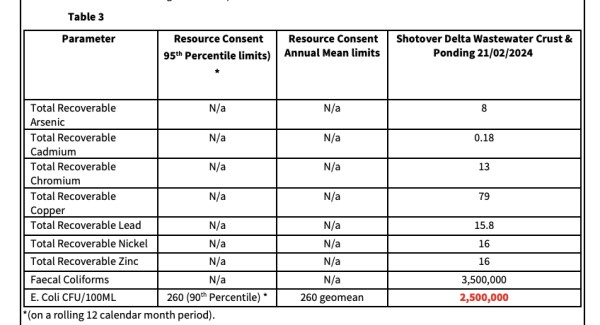
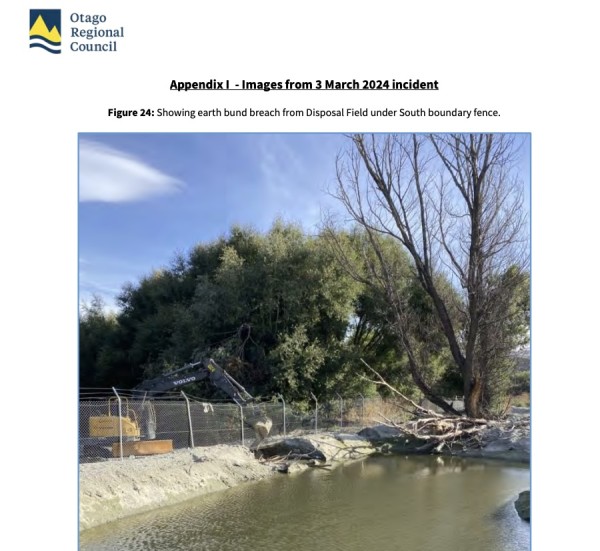
Hopefully this article helps build a picture on how ORC and QLDC communicate with journalists. We have a gut instinct this is also how council to council communications are handled – please take note Central Otago District Council.
That wall is about to collapse an QLDC can’t be trusted to tell us what’s in that chronically blocked disposal field.
As to the ODT’s friendly coverage of this issue, including this morning’s “effluent will be undetectable” story, take a look at the ORC’s data and it clearly shows big differences upstream and downstream from Kawarau River effluent discharges – and that’s much further from the disposal field than the Shotover River.
